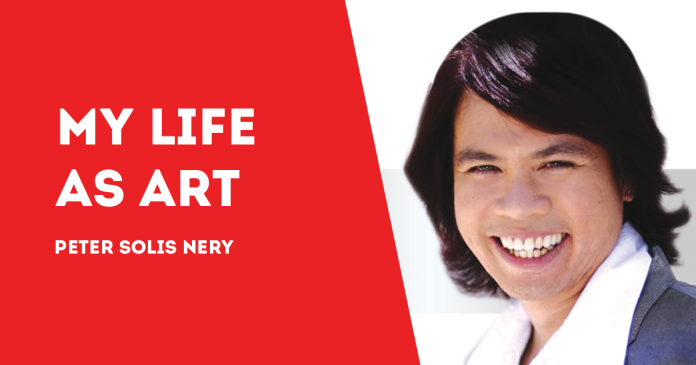
CAN EVERYBODY make art? Can just anybody make contemporary art?
With everybody posting every drawing, every verse, every dance move they make on the Internet, you would think that just anybody could make art.
Who is to say that they can’t?
Well, your Gen X-er PSN thinks that some people are more qualified to judge art. More experienced, educated, learned, and knowledgeable people are likely to better qualify something as art.
Time will still tell. Art consumers may still decide. But for now, we also got experts and scholars, too. People who have dedicated themselves in the study of art.
If I have studied and observed art trends in the last 20 years, am I not qualified to make some judgments?
Am I not better qualified to make better judgments than a rich man who has never travelled, has never been to three continents, never been to 72 world class museums like I have?
If someone buys your crayon stick figure drawing for P75,000, maybe that’s profitable art for you; but it’s not very likely that such work will be greatly admired for its beauty in another 20 years’ time like we still admire the “Mona Lisa” from 500 years ago.
If your hugot verse is liked by 50,000 people online, maybe that’s popular art for you; but it’s not very likely that it will be remembered one month, or one week from now, unlike “Psalm 23”, or Basho’s frog-pond haiku written some 330+ years ago.
***
So, what are the elements of art?
In most art, these are the basic elements: line, form, shape, space, color, value, and texture.
The principles of art are: harmony, unity, balance, proportion/scale, contrast, emphasis, pattern, rhythm, repetition, variety, and movement.
You should really get the meanings of these concepts and terms from your MAPEH subjects. If not, research them yourself as they apply to the visual arts, literature, music, architecture, fashion, design, film, performing arts, et cetera.
Now, if people do not understand these terms and their use in the arts, what makes them qualified more than I to make judgments about art?
***
What are the elements of contemporary art?
Since no one has yet come up with an official list, PSN volunteers the following in addition to the basic elements just mentioned above: appropriation, hybridity, performance, time, perspective, technology, destruction, text, space.
PSN came up with this list from interaction with many artists in the Philippines and around the world, visits to various contemporary art museums in at least three continents, and countless hours of Internet surfing in addition to books perused, and special courses taken on the subject. Note that not all elements may be found in all artworks. Note that some contemporary artworks may have several, or even just one, of these elements present in them, while others may have all these elements. But for a work to be called contemporary art, it must have at least one of these elements.
***
Now, to define these elements:
“Appropriation” or “aggiornamento” is updating or bringing into the present the artworks from the past. It involves combining new and old elements by enhancing existing artworks so that they look modern or contemporary.
“Destruction” or “distortion” is the use of techniques or methods that show damage to the artwork or in the artwork. It is very much like the “wabi-sabi” philosophy of the Japanese that accepts and appreciates beauty that is imperfect, impermanent, and incomplete.
“Hybridity” as an element of contemporary art comes from the idea of “hybrid”, which means mixed and combined things, usually in the use of various art media or unconventional materials to produce artworks.
“Performance” or “staging” is the purposeful and intentional action of various human activities (sometimes the most ordinary), giving it more meaning and importance as an experience of art.
“Perspective” is the considered use of space surrounding the artwork, which may affect the viewing and experience of it.
“Space” is transforming a location into an art venue. It may be related to “perspective”, but in some works, it is also an element just by itself.
“Technology” is simply the use of technology, engineering, computer, and mechanical principles or robotics to create and disseminate art.
“Text” or “text art” is the use of text or words, or even just letters of the alphabet, to add another level of meaning to the artwork.
“Time” is an element of art when the passage of time is important to the appreciation or understanding of the artwork./PN

